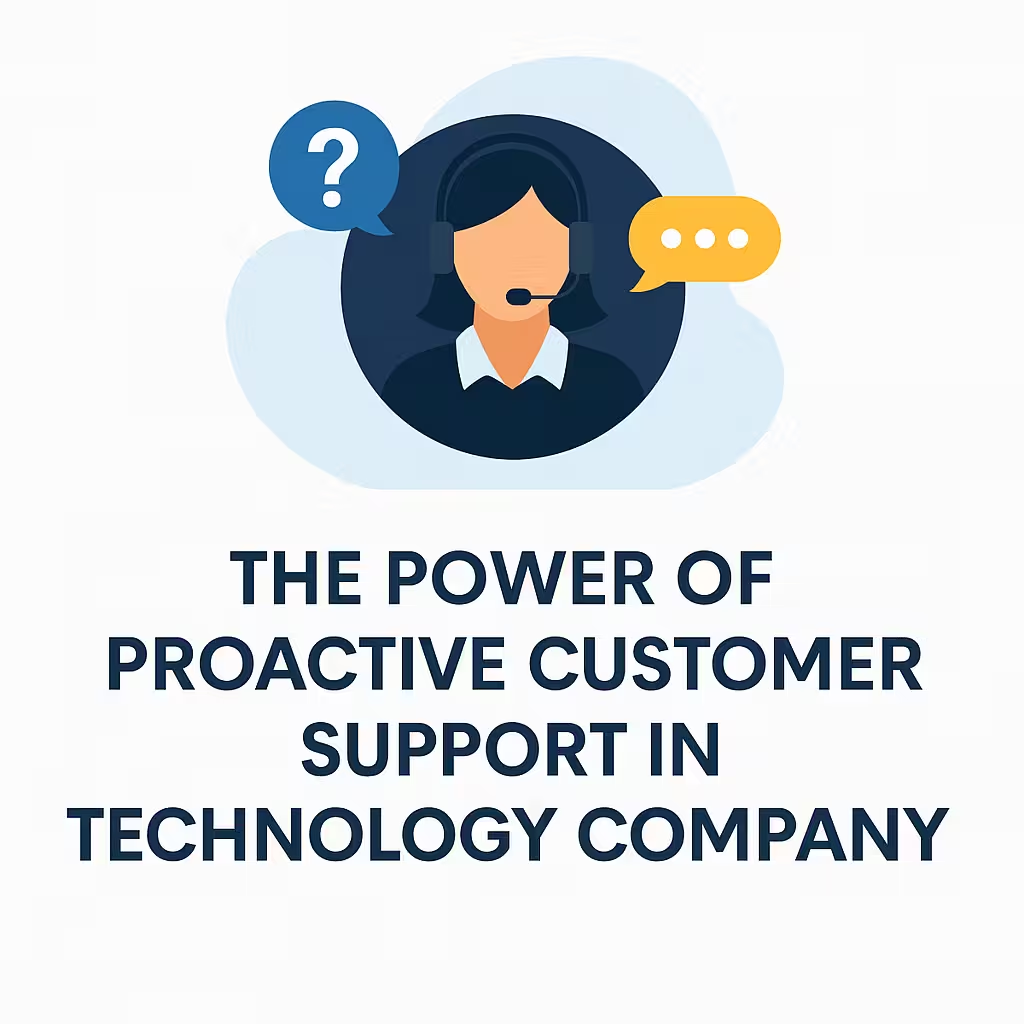
In the fast-paced world of technology, customers expect more than just cutting-edge products. They expect the best customer service that keeps up with their needs. Traditionally, customer service has been reactive: wait for a problem, then fix it. But forward-thinking tech companies are flipping the script. Enter proactive customer support, the silent hero that solves issues before they arise.
And it’s a game-changer. Let us know in deep how proactive customer service boosts technology business growth.
What is Proactive Support?
Proactive customer support means anticipating a user’s needs and reaching out with help, updates, or resources, before the customer has to ask for it. It's about preventing problems rather than just solving them. Think of it as the digital version of a friend texting you, “Hey, I saw this might be a problem… Here’s a quick fix.”
Proactive customer support for tech companies could look like:
- Notifying users in advance of potential service disruptions.
- Sending personalized onboarding guides right after a product is purchased.
- Alerting users about unusual activity on their accounts.
- Offering tips or upgrades based on how customers are using the software.
It’s thoughtful, it’s helpful, and customers love it.
Benefits of proactive customer support in tech industry:
1. It Builds Trust
When a company takes the first step to help, it shows responsibility and care. Customers feel looked after, not just processed. It’s a signal that the company is watching out for them, not watching the clock.
2. Reduces Downtime
For tech companies, even small glitches can disrupt users' work or cause confusion. By identifying issues early and communicating them clearly, companies can reduce frustration and help users get back on track faster.
3. Boosts Customer Retention
Happy customers stay. It’s as simple as that. When users consistently receive proactive help, they’re far more likely to renew subscriptions, upgrade their plans, and recommend the company to others. It turns customer support into a loyalty engine.
4. Cuts Down Support Volume
Surprisingly, being proactive can reduce the number of incoming support tickets. When customers receive answers before they hit a roadblock, they don’t need to contact support at all. This frees up human agents to focus on more complex issues.
Real-World Example: Proactivity in Action
Let’s say a cloud storage company notices a user nearing their storage limit. Instead of waiting for the user to get locked out or experience slow sync speeds, the company, knowing the importance of service, sends an alert:
"You're at 90% of your storage. Here’s how to manage space or upgrade your plan."
This small, timely action prevents a problem, reduces future complaints, and makes the user feel informed and empowered.
How to Make It Work
Implementing proactive support doesn’t require a giant leap. It starts with a few smart steps:
- Proactive Planning: Monitor usage trends, system logs, and customer behavior to spot patterns and understand the customer service objective.
- Create Helpful Content: Build knowledge bases, onboarding emails, and video guides that answer questions before they're asked.
- Automate Thoughtfully: Use automation to send timely alerts and updates, but keep the tone friendly and human.
- Train Your Team: Equip support agents to reach out when they notice red flags or opportunities for help.
The Human Element Still Matters
While automation plays a big role in proactive support, human interaction is still essential. When reaching out, customers appreciate personal messages over robotic alerts. A quick message from a real support agent like, "Hey Bob, we noticed your dashboard is loading slowly. Here’s a fix!" …can go a long way in building rapport.
Conclusion
In a competitive tech landscape, the difference between “just okay” and “outstanding” support often comes down to who makes the first move, and knows the importance of great customer service.
Best proactive customer support strategies for technology firms shows that a company cares, not just when things go wrong, but all the time. It strengthens relationships, reduces churn, and builds a reputation for reliability.
For technology companies looking to stand out, the smartest support might just be the one that speaks before it’s spoken to.

